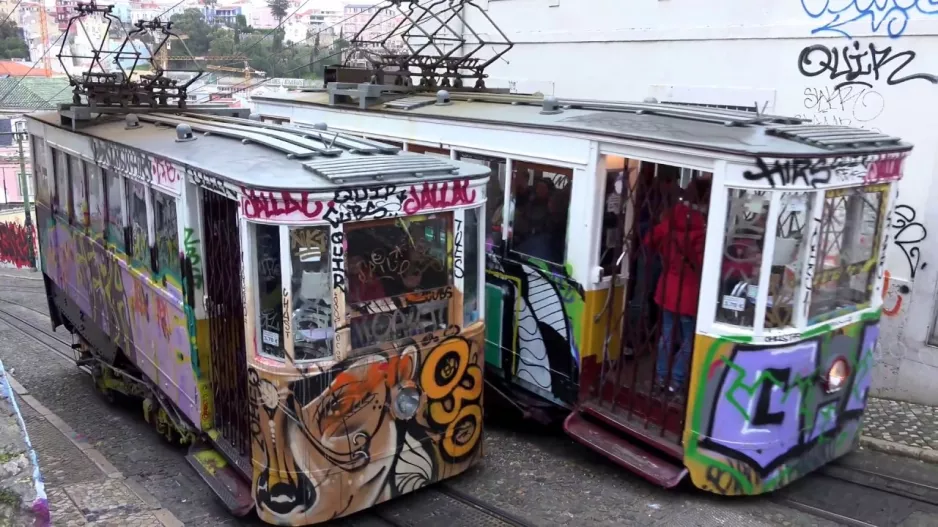Gloria Elevator, Lisbon
YouTube name: Stahlseil.
Language: Portuguese.
Date: April 15, 2018.
City: Lisbon (Portugal).
The video shows
Carris
Operational
Lisbon funicular Elevador da Glória: Bairro Alto - Restauradores
Operational
Lisbon cable car Gloria 1.
Lisbon cable car Gloria 2.
Description
Lisboa is a very hilly city. OK, not quite as hilly as Genoa, but some of the districts are still around 50 meters above the old town. There has been a tram in Lisbon since 1873. Back then it was still horse-drawn. Since the slopes to the higher districts were too steep for the horse-drawn carriages, the idea of expanding the network with inner-city funiculars came up quite quickly. The two Ascensor, as they are called in Lisbon, were developed by Raoul Mesnier de Ponsard. They were initially classic funiculars with water ballast. The vehicles were braked by racks that were attached to the outside of the road. Both cars ran on their own tracks, which were brought together before and after the crossing by track loops. The cable ran in a recessed groove under the road, similar to the cable tram system in St. Francisco. From 1890, three more classic American-style cable car routes and the Bica funicular were added to the two Gloria Lavra railways.
With the electrification of the trams and cable cars between 1910 and 1914, the funiculars were also converted to electric traction. The two Ascensor do Lavra and Ascensor da Glória are a special type. The water ballast drive was replaced by electric traction motors in the vehicle. This is how it works. Like a tram, both vehicles have a drive that can move the wheels of the carriages by means of adhesion. Both carriages are connected via the traction cable, which is diverted in the mountain station. Both vehicles have two current collectors. The direct current is fed via one line to the traction motor of the first railcar, from there via the second overhead line to the second railcar and from this back to the ground. This means that both motors are connected in series and always run synchronously. The car travelling downhill pulls the car travelling uphill. The drive only has to compensate for the difference in weight between the two cars. A complex drive station is not necessary.
The safety brake acts directly on the traction cable channel.
